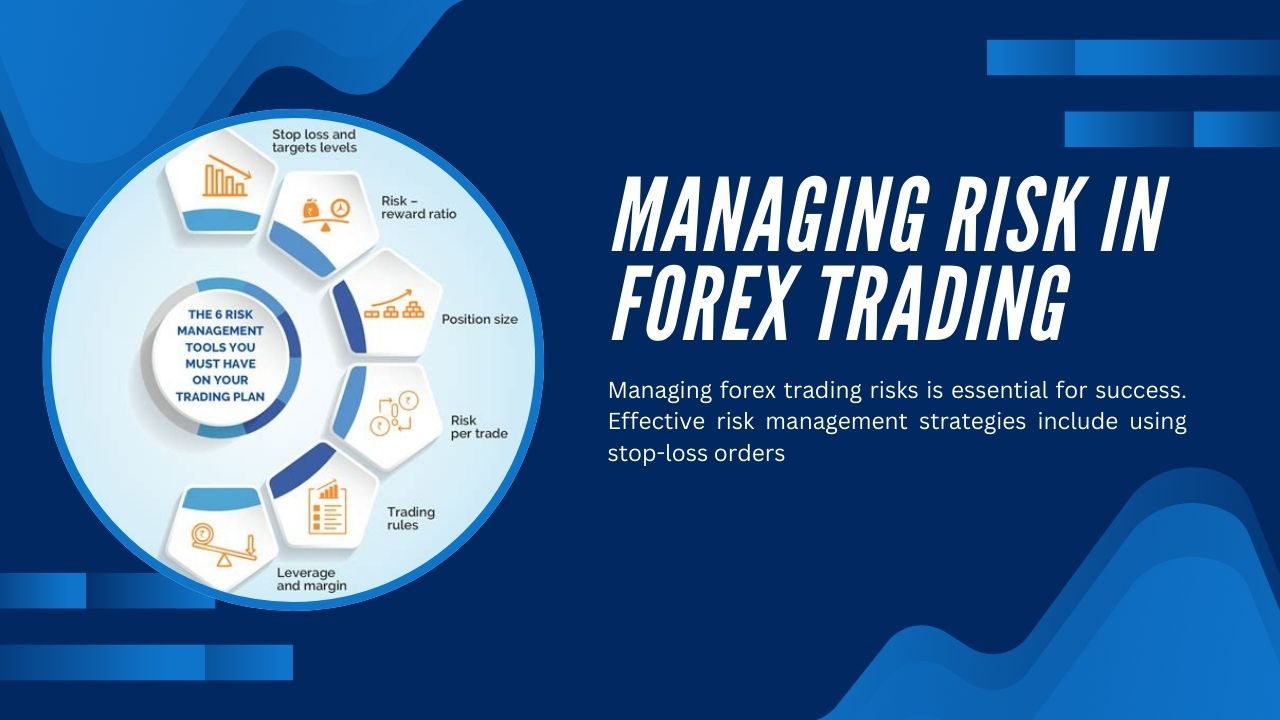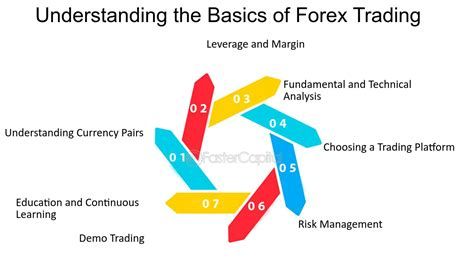Managing Risk In Forex Trading

Futureincomes.site Assalamualaikum In This Blog I want to share interesting information about Forex. Articles Explaining Forex Managing Risk In Forex Trading Read this article to the end
"A Comprehensive Guide to Forex Trading Risks
Comprehending the basics’ of the forex trading risks is a prerogative for beginners to the market. Trading in forex is known as a currency exchange trade that is rife with high profit returns but also with high risks.
Price collapse can cause great harm due to high volatility of the market. Leverage inherently supplied in forex trading can be a boost to profitability grandma but it equally has its effects of built in jeopardy. The traders should know their risk appetite and utilize risk management, including stop-loss measures.
Other factors such as geopolitical factors, economic fundamentals and market psychology also affect currency prices. With this knowledge, traders can make better choices and comprehend the intricacies of forex trading with ease.
Risk Management in Forex Trading
As forex trading is a high-risk game, risk management is also found to be of great assistance in safeguarding trading capital and shielding the traders from excess losses. General risk management concepts permit the traders to comprehend their risk appetite and use that information to make selections on position limits and amounts of used leverage appropriately.
The approach helps to reduce the risk of negative market movements while also increasing the upside potential over the longer term. Through the process of risk management, traders evaluating the risk involved in the trade with respect to Forex market fluctuations can remain committed to a defined trading strategy.
Traders are able to remain committed even in tough trading situations, and this is because sound risk management improves psychological toughness. The risk management in Forex, to put it bluntly, is the cornerstone upon which success in such a volatile environment is built.
Identifying Different Types of Forex Trading Risks
Assessing Various Categories of Forex Trading Risks Outlined In Forex strategy development, there are various risk categories which a trader should be able to identify – these include market risk, also, potential risk which is quite frequent because people tend to lose due to changes in price direction.
Otherwise, leverage risk is also an important one since this extends to borrowers or debt holders and this means leveraging buying when loss could also be leveraged. Liquidity risk is also another one – which means that trades might not be executed at all and if they do, it can be at a highly volatile price than expected.
Other operational risks include technical malfunctions or human error slash mistakes, either of which could set back the outcomes of the trade in some form. On the other hand, some political turmoil or fundamental economic indicators might also occur voltage and move things according to their signs.
Understanding all these risks makes it possible for every Forex trader to formulate better and more practical risk management techniques that would minimize negative impacts on their investments and grow the chances for profit and success in this increasingly aggressive environment.
Setting Up a Risk Management Plan for Forex
Primarily, Taking time to create an appropriate risk management structure for Forex trading will determine your viability in the business in the longer run. You can start by considering your risk appetite and setting specific and measurable financial targets. Furthermore, it is advisable to try and evenly distribute a set number of more than one currency pairs in order to minimize exposure.
It is important to place stop-loss orders, these will assist in closing the trades at some pre-defined levels to safeguard your capital. Periodic evaluation of the trades with the prevailing market environment and making necessary adjustments helps the trader in being on the forefront of possible losses.
In furtherance, keeping to a consistent manner of account equity allocation ensures that there is no overexposure to any trade. With the applications of these methodologies, traders do not only protect their investments but also develop a culture of growing their accounts and enhancing resilience in the turbulent Forex market.
The Importance of Stop-Loss Orders in Forex Trading
In the fast paced world of forex trading, stop-loss orders serve an important purpose when it comes to risk management. These are basically surrender orders placed by traders who automatically cut losses in the event that prices reach a specific level.
This reduces excessive losses and ensures that the traders do not become emotional and make frantic moves in the volatile market. With stop-loss placed on the ways to cut losses, traders are more concerned about the outlay of the resources and not the pesky shift of the tides.
They could be moved as the market changes too giving traders a usage that does not tie them down. To conclude and quite simply illustrated, in order to succeed in forex trading, you must be able to use stop-losses effectively as it enables the user to decrease their risk exposure whilst maximizing the opportunities available in the volatile market.
How Should The Position Size Be Determined In Forex Trading
When trading in forex, calculating position size becomes an imperative aspect of risk management. traders that want to work out the usual size that is best positioned should start with the standard amount of risk they are willing to take. This percentage is often expressed relative to the account size eg 10%.
Most people suggest not risking more than 1-2% of the total account equity on a single trade. Subsequently, the traders have to find out the pip value, which differs depending on the currency pairs’ account denominated with the denominator.
Knowing the pip value, the trader can use the formula: Position Size = (Account Risk Amount)/(Risk per Trade in Pips). This way of doing things protects the traders from bigger losses, thus allowing them time in the market, which in turn increases their chances of success.
Utilizing Leverage Wisely to Manage Forex Risks
Forex risk management involves understanding the prudent usage of leverage as a tool. With the use of leverage, a trader can take greater positions in the market than what his or her equity allows. However, with such increased power lies the increased potential for losses as well.
In order to reduce risk, there is an importance of knowing the appropriate level of leverage to use and applying it when needed. A more safe approach would be to adopt a more modest level of leverage, as this would ensure account balance drawdowns do not reach alarming figures when the market moves against the trader.
Risk exposure should also be minimized by placing appropriate stop-loss orders, spread out portfolio investments and taken into consideration the developmental aspects of the market. Keeping aware of the external factors affecting the market also aids in better judgment making.
Discipline and an adherence to a solid trading strategy are both integral to the effective management of leveraged positions, and traders who are both disciplined and strategic can be exposed to leverage with minimal risk.
Developing a Psychological Approach to Risk Management
Understanding that people can behave differently and might respond irrationally to management action is a crucial part of risk management for any organization that is to improve its decision making system. It can be crucial to understand risk perception as understanding the perception can impact risk behavior.
Integrating psychological principles into business practices can help companies recognize detrimental biases in judgment such as overconfidence and loss aversion. There are particularly focused training programs on emotional intelligence which would build the capacity of staff to recognize their biases and ensure their judgment is as fair as possible in the business operations.
Moreover, encouraging such a behavior offers a chance for the ease of collaboration, and evaluation of risk is done collectively, which means teams can scrutinize situations in detail. In the end, employing a psychological approach does not only help in the formulation of comprehensive risk identification and mitigation measures but also instills a culture in the organization which is flexible enough to deal with complexity and ambiguity in the volatile business environment that persists today.
Diversification Strategies for Reducing Forex Risks
For forex traders, diversification strategies are key in the management of forex risks. Taking a diversified bet in a number of currency pairs means that the adverse movement on a single market would not have a big impact on the net portfolio.
For example, emerging market currencies can be included when one is focusing on major currencies such as the USD and the EUR. This would shield an investor from too much volatility. Also, the traders can hedge their portfolios by including correlated and non-correlated pairs.
Traders can also adopt the use of financial instruments such as options and futures for further diversification, enabling them to protect against unrealized risks. Moreover, following a diversified strategy not only preserves the capital but also provides a basis for maximizing different states in the markets.
In the end, a proper diversification strategy can be an effective way to mitigate forex risks which can lead to better and more consistent trading results.
The Relationship of Economic Indicators to Forex Risks
Foreign exchange risks are an inherent part of the world currency markets impacted by economic factors. The fundamental ones include Gross Domestic Product growth, unemployment and inflation in the reviewed country.
High indicators usually imply that investors from abroad are likely to invest, resulting in lower forex risks, as the currency will be relatively strong. On the negative side, bearish indicators can cause volatility, leading to a fall in currency value and increased risks of clients.
Also, Central banks deal with these indicators by changing the interest rates, which affects the value of currency as well. Hence, the correlation of these indicators and the foreign exchange risks would be pertinent for decision making, especially as traders have to consider economic reports.
In the end, it does allow for investors to comprehensively keep in touch with the economic data, which helps them understand the way the foreign exchange market works which is quite complex.
Market Volatility and Its Implications on Trading: An Assessment
Market volatility is the high and rapid price movement over a period of time a week, a month or years of assets all of which is the price movement of any economic indicators, or any important palpable events happening worldwide among other things. Such volatility has to be recognized by traders since it provides chances of investment and makes risk risky as well.
Strong volatility normally translates into vigorous trading, as large investors do not want to miss the rate fluctuations and try to earn profit from them. Still, it also may bring substantial losses which make it impossible to ignore risk management. Various tools, including volatility indexes and technical analysis, are also used by traders to assess the current state of the market and make necessary moves.
By varying trading strategies according to the prevailing volatility in the market, opportunities can be gained with minimum risk of getting caught up during the downturn. In the end, a thorough knowledge of how the market moves helps individual traders in dealing with complicated situations regarding financial markets.
Details about Certain Tools and Software That Can Assist in Risk Management
One of the hardest tasks for all organizations who are determined to reduce the uncertainties surrounding their operations while at the same time protecting their assets is risk management. Some of the tools include software and other resources that have been developed to ease this duty, thus increasing efficiency.
In a systematic manner, risk management software permits teams to discover, assess and rank risks making sure that such threats will be addressed in advance. More to that, project management tools that incorporate risk management functionalities allow the tracking of risks throughout the project cycle in real time.
Data analytics is another useful tool as it makes use of past data for predictive analytics that help organizations to identify possible risks in future. In addition, such tools promote effective communication amongst various stakeholders, thus ensuring that risk management is consistent throughout the project life cycle.
Organizations may turn their weaknesses into strengths by building a comprehensive structure for identifying risk factors as well as effective counter-measures through these tools and software, which solidifies organizational success.
Common Errors to Avoid in Forex Risk Management
Dehydration is one of the most common mistakes in Forex risk management, and, in fact, it is the real risk in this business. Traders will initiate a position, as is often the case, without a clear plan, especially one in which a stop-loss has been set. And there's a common enough error that traders cause themselves embarrassment by not paying attention to the fact that their broker will allow them to trade on a fractional basis. This will magnify the dollars returned as well as those lost, resulting in the rapid depletion of one’s account.
The failure to multifold trades is another error that utilizes risk caution as one need to gurantee that one currency pair will not breach unreasonable amount positions when leveraged . In addition, emotional trading based on fear or greed contributes a substantial challenge in the risk management department.
The final error is a lack of follow up on the investments including analytical assessment to evaluate market trends and the strategies to be used for long term profitability. Forward planning and setting rules will go a long way in encouraging a risk management frameworkqithin the organizational climate, hence maximizing chances of making gains in the Forex market over a long period.
Case Studies of Successful Risk Management in Forex
The methodology encompasses planning of how the forex would be traded and the risk aspects involved. Today’s most major effect on trading is impact on the traders perspective. Active traders approach the concept of risk management in today’s rapidly evolving society and therefore risks need to be managed and this is dire in the case of forex. The good example is the professional traders that controlled their losses thanks to the implemented system that made use of stop loss methods for great cuts in money losses. Empirical Study.
With the help of historical data and market analysis, this trader pinpointed the best possible moments for entering and leaving the particular trading position; this reduced the risk while increasing the potential income. Another compelling example involves a Forex fund that implemented diversification strategies across various currency pairs, which enabled it deal with adverse market movements.
The strong possibility of losses, which managed traders regularly seek to lower risks through the performance evaluation and strategic modifications explains why these successful traders keep discipline and remain flexible within the Forex market.
They are most useful in presenting such insight that is bound to new and experienced traders alike. Their wisdom espouses that effective risk control is vital for steady earnings.
The Significance of Backtesting in the Assessment of Forex Trading Strategies
Backtesting is essential and interdisciplinary in nature because it fosters the emergence of successful strategies within the involving dynamic environment of Forex. By assessing a particular strategy with historical data, traders can make better predictions regarding its future effectiveness and the possible profit it would generate.
The insights gained during this process include the particular challenges posed by the different strategies applied, providing critical lessons that could help in the future. It broadens the scope of a trader, and makes them better prepared for several scenarios in the actual trading environment.
Udemy rounds off the majority of its modules with a backtesting section. Backtesting instills confidence because traders can look to the past and see how their strategies would have fared in the market, which reduces the chances of emotional trades in real world trading situations. In a nutshell, ample backtesting not only improves the strategy’s robustness but also encourages a structured pattern of trading which makes the trader more rational and tactical on the fast moving Forex market.
"That is the explanation about managing risk in forex trading that I have conveyed through forex Please explore this topic further stay confident and pay attention to your body's nutrition. If you feel inspired don't forget to check other articles below.










